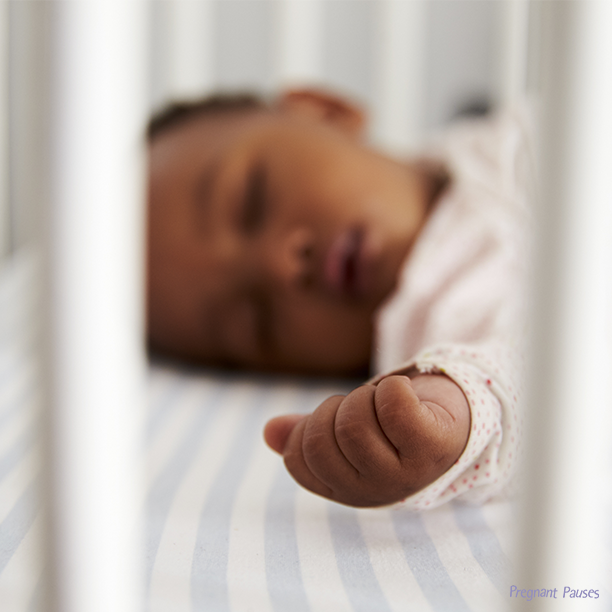Sleep safety is a hot topic right now, and so we wanted to share some tips on how you can ensure your little one has a restful and safe night’s sleep. We’ve probably all heard that baby needs to be alone on his back in a crib to sleep, but sleep safety extends beyond that. We have eight tips for naptime and bedtime.
- Always place your baby on his back to sleep.When you lay your little one down for a nap or at night, always place him on his back. Once your baby is able to roll over on his own – sometimes a surprise for mom and dad at first – he may roll over in his sleep to his tummy or side. As long as he is able to roll back-and-forth, there isn’t a need to return him to his back.
- Room share with your baby.While your little one should not share a bed with you it is recommended that his crib or bassinet be in your room for at least the first 3-6 months. This way, you can hear your baby and get to him more quickly if he needs you.
- Ensure a firm sleep surface.A lot of times we want our little one to be bundled up and comfy. However you can rest assured that your little one is much safer on a firm sleep surface than a fluffy one like on a pillow or comforter. A simple crib mattress or pack-and-play is perfect.
- Free your crib from pillows, blankets and toys.Your baby’s crib shouldn’t have pillows, blankets or bumper pads. If you’re concerned about your little one sticking a leg or arm through the crib and getting stuck, use a mesh crib liner instead of the padded bumpers.
- Don’t let your baby get hot.As mentioned above, there shouldn’t be blankets in your baby’s crib. If you’re concerned about him being warm during the winter, opt for socks, footie pajamas or another sleeper for warmth.
- Consider offering a pacifier.As with all things, there are pros and cons to offering a pacifier. Even if you only offer a pacifier during naps and at bedtime, it can be beneficial in preventing SIDS according to many studies.
- Stay away from smokers.Second-hand smoke is very dangerous for babies and has been found to contribute to an increased risk of SIDS. A relatively new term, third-hand smoke is just as dangerous. Third-hand smoke is a term for residual contamination that lingers on walls, toys and clothes.
Remember, when in doubt you should reach out to your pediatrician. Your little one’s health and well-being are your number one priority, so take advantage of your pediatrician’s office. Attend all well check-ups and be sure to ask any questions no matter how trivial they may seem. Most pediatricians’ offices also have an after-hours nurse line that you can call at night or on weekends.
Additional safety information available at kidshealth.org.


